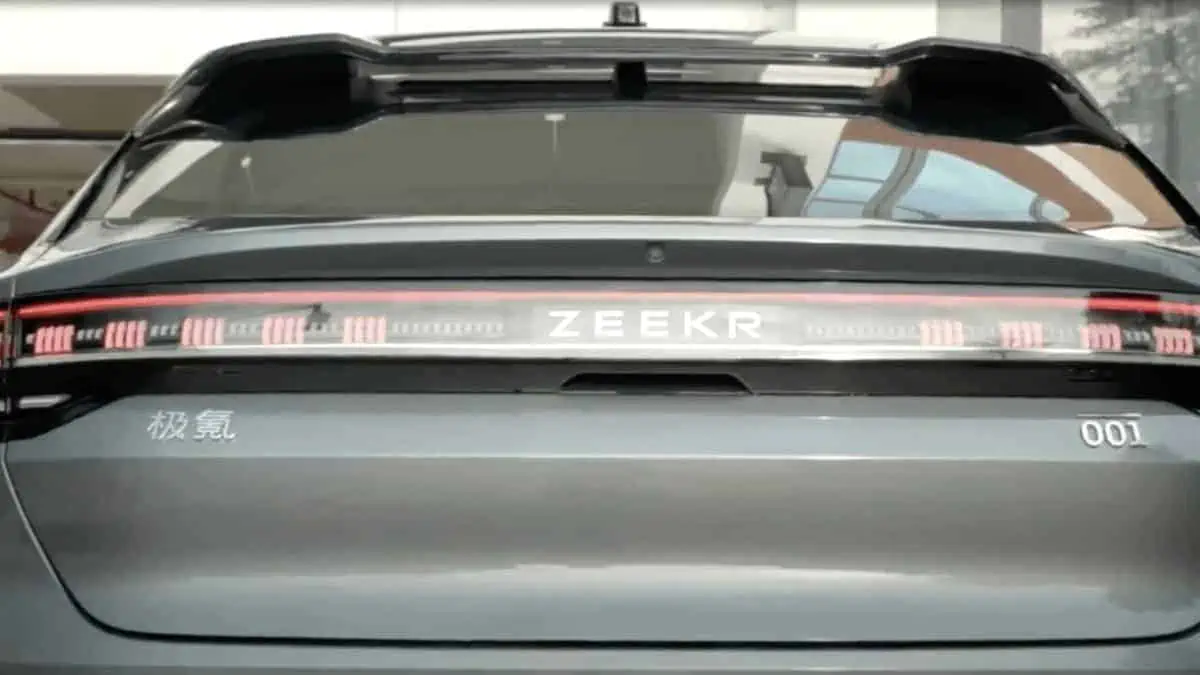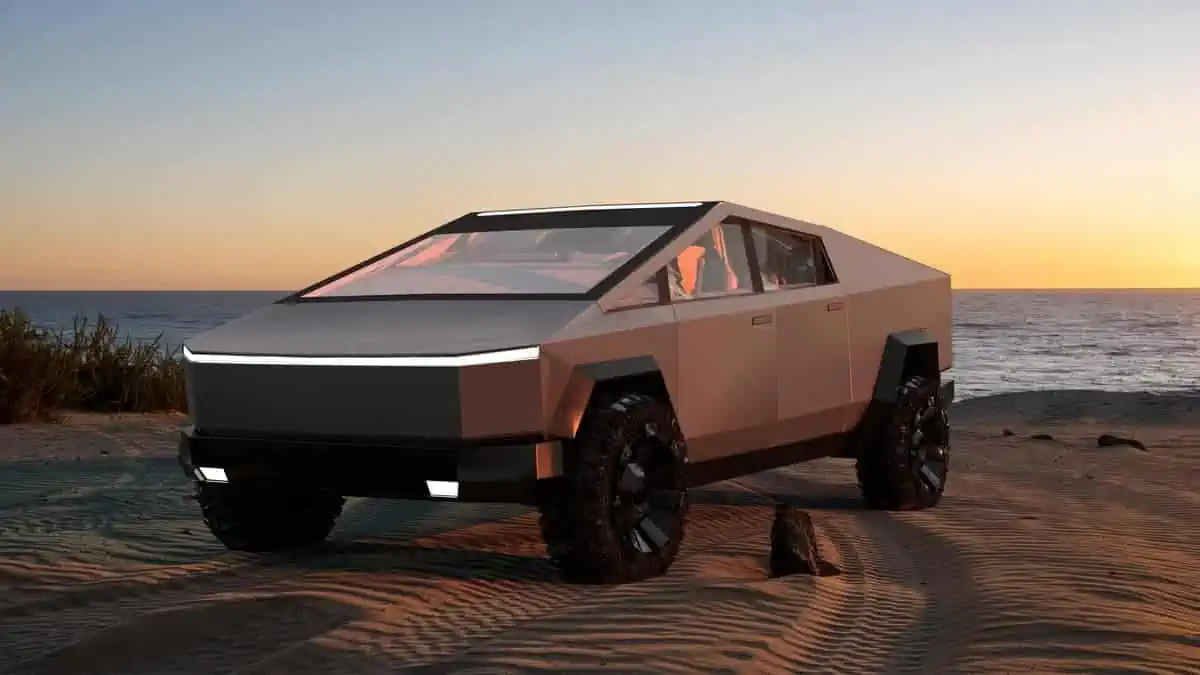Geely’s premium electric vehicle brand Zeekr has officially launched its second model, a large passenger van named the ‘009‘, as per FutureCar.
The electric multi-passenger van (MPV) will be the world’s first vehicle powered by an advanced battery developed by battery maker Contemporary Amperex Technology Co Ltd. (CATL) called the Qilin, which was unveiled over the summer.
CATL is the world’s biggest battery supplier to the auto industry and the largest lithium-ion battery producer in China.
The company’s automotive customers include Tesla. CATL supplies the batteries for the Tesla Model 3 sedans built in Shanghai. In addition, it also supplies batteries to Honda, Mercedes-Benz, Volvo, and Volkswagen.
CATL’s Qilin battery
The more energy-dense, cell-to-pack Qilin battery CATL developed allows an electric vehicle to travel over 1,000 km (621 miles) on a single charge, according to the company.
The Qilin battery’s range can be a game changer for the auto industry and push widespread global EV adoption.
For one, the battery pack could be reduced by 50%, lowering automakers’ costs. Even at half the size, the battery could deliver about 250 miles (402 km) or more, leading to more affordable, mass-market EVs.
Notably, CATL’s Qilin battery is named after a legendary creature in Chinese mythology and is the third generation of the company’s cell-to-pack (CTP 3.0) battery technology.
The battery achieves the world’s highest volume utilization efficiency of 72% and an energy density of over 255 Wh/kg, which CATL states provide ranges of over 600 miles (965 km).
In contrast, the Tesla Model 3, using lithium iron phosphate (LFP) battery chemistry, has a cell-to-pack ratio of 49% with an energy density of 173 Wh/L.
Furthermore, the Qilin battery has 13% more power than the new and improved 4680 battery Tesla is manufacturing, all with the same battery chemistry and pack size. It enhances fast charging, efficiency, low-temperature performance, safety, and service life.
WE & ME – two Zeekr 009 versions
The Zeekr 009 MPV is available in two versions, the WE and ME. However, only the more expensive ME version of the 009 MPV will have the 140 kWh Qilin battery. In comparison, the WE is offered with a traditional 116 kWh battery that is also CATL-supplied.
The Zeekr 009 with 140 kWh Qilin battery has a China Light-Duty Vehicle Test Cycle (CLTC) range of around 822 km (510 miles). This range figure is nearly as much as the 520-mile range of the Dream Edition version of the Lucid Air sedan, currently the world’s longest-range EV. The range of the 009 with the 116 kWh battery is more than 700 km (435 miles).
The Zeekr 009’s range estimates are more than 995 internal combustion engine (ICE) vehicles on the market, according to the company’s CEO, An Chunghui.
The 009 WE version will start at RMB 499,000 ($68,452), and the ME version will begin at RMB 588,000 ($80,660).
The company said deliveries of the 009 with the new Qilin battery are expected to start in January 2023 officially.
Cell-to-pack (CTP) batteries
CTP batteries are not built like typical EV batteries using a series of modules connected that holds individual cells. Instead, the entire battery pack is significantly all one structure. This design increases space utilization and reduces the cooling and electronics systems requirements versus connecting individual modules at once.
CATL launched its first CTP battery in 2019. It reached a volume utilization efficiency of over 50%. CATL stated that the improvements in the Qilin battery resulted from breakthroughs in the core manufacturing process, battery, and materials structure design.
In the Qilin battery, an internal crossbeam, liquid-cooling plate, and thermal pad were included in what CATL refers to as a “multifunctional elastic interlayer.” This layer helps to fit the changes inside the cell, improving the battery’s reliability throughout its lifespan.
The Qilin battery also features a water-cooled design. CATL’s engineers put the liquid cooling functional parts between adjacent cells rather than at the bottom like a standard EV battery pack.
According to CATL, this increases the heat transfer area by four times while keeping the battery cooler.
Furthermore, it lets the cells cool down faster to prevent any abnormal thermal runaway conduction among cells, which could lead to a fire.
Advanced driver assist system (ADAS)
In addition to the Qilin battery in the Zeekr 009, the EV comes with an advanced driver assist system (ADAS) powered by the technology supplied by Intel’s autonomous driving unit Mobileye.
The advanced ADAS in the 009 comes standard with dual Mobileye EyeQ5H chips, four 2-megapixel surround view cameras, 12 short-range ultrasonic radars, seven 8-megapixel HD cameras, and one ultra-long-range millimeter wave radar.
The Zeekr 009 is capable of autonomous highway driving, including navigating on highway entrance and exit roads with the hardware installed.
Zeekr with $500 million external funding
Automaker Geely announced the new Zeekr brand in March 2021 as a standalone brand to compete with XPeng, NIO Inc., Tesla, and other premium EVs in China.
Zeekr raised $500 million in the first external funding round in Oct 2021, rating the company at $9 billion.
Notably, the funding round was headed by Intel Capital, the venture capital arm of Intel Corp. Zeekr is also supported by Geely’s billionaire founder and Chairman, Li Shufu.
Zeekr targets young customers for EV purchase
Similarly to its domestic rivals NIO and XPeng, Zeekr targets tech-savvy, younger consumers more likely to buy an EV. This group of buyers is seeking advanced vehicles to extend their digital lives, including connectivity features and smart technologies like automated driving.
Geely’s first model was the “Zeekr 001”, a compact, battery-powered wagon presented in April 2021. It is built on Geely’s ‘Sustainable Experience Architecture’ (SEA) EV platform. The SEA is the world’s first open-source EV architecture, according to the automaker.
Waymo’s multi-passenger commercial robotaxi
In February, autonomous driving developer Waymo, formerly known as Google’s self-driving car project, rolled out its new electric robotaxi vehicle created by Zeekr.
The EV is designed explicitly for Waymo’s autonomous ride-hailing service called ‘Waymo One,’ which the company aims to launch in major cities in the US.
Waymo stated, “the multi-passenger Zeekr commercial robotaxi was designed to prioritize the comfort, convenience, and preferences of Waymo customers. The all-electric Zeekr EVs will eventually replace all of the hybrid/gas-powered models in the Waymo One fleet”.
Lastly, Waymo also said it would merge its full-stack autonomous driving platform it calls the ‘Waymo Driver’ into the commercial version of the fully-electric Zeekr robotaxi.






